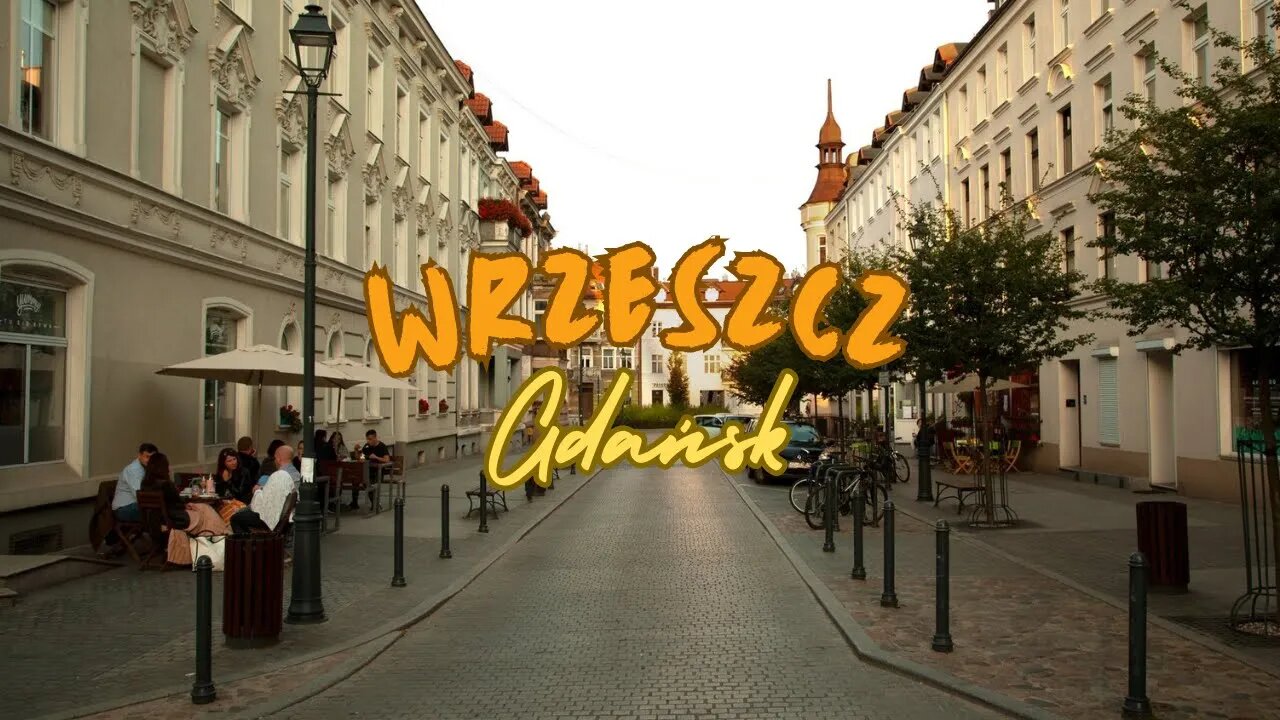Premium Only Content

Wrzeszcz | Gdańsk's Vegan Hipster District | Poland
Checking out the Wrzeszcz district in Gdańsk and eating some vegan desserts at Fukafe vegan pastry and coffee shop. Poland, 21/06/23
After decades of neglect Wrzeszcz is truly on the up and is these days far more of a commercial centre than the centre of Gdańsk itself. This is where you’ll find the biggest shopping mall in Gdańsk (found in a 'Wrzeszcz Triangle' with two other smaller nearby shopping malls), a rapidly expanding, modern, business district, the home of Gdańsk University, the city’s newest large concert venue as well as 50,000 residents. While nowhere near as picturesque as Gdańsk old town, the area is not without its attractions and points of interest. Impossible to escape in this area are the students - it’s their youthful presence that can be thanked for the growing number of cafes, bars and restaurants.
Wrzeszcz History
The first thing that stands out about Wrzeszcz (pronounced v-zeh-sh-ch) is the name, which comes from the Polish word ‘wrzos’ meaning heather.
First written mention of the area dates to 1261 when a settlement known as Vrieszt was to be found here. In 1412 the district was awarded to Gerd von der Beke, an ally of the Teutonic Knights, before moving into the hands of the Bischof family in the second half of the 16th century. By the 17th century local tycoon Zachariasz Zappio had acquired much of the property between what is today ul. Do Studzienki and ul. Słowackiego, building a palace there that proved grand enough for Polish king Jan III Sobieski to stay in back in 1677. It’s for this reason you’ll find nearby streets with regal connotations (Dolina Królewska - Royal Valley, and Królewski Potok - Royal Brook). You won’t find remains of the residence anymore, though one legacy of the past that survives to this day is the profusion of linden trees. It was the Bürgermeister Daniel Gralath who can claim credit for this, having commissioned the planting of four lanes of linden trees over a two-kilometre stretch flanking the main high-street. The project, which was realized between 1767 and 1770, set him back 100,000 guldens, which we can assume is a very large amount of money!
The 18th century saw intense construction occur, most notably the Kuźnicki Manor House, complete with rooftop gardens touting footbridges, ponds and exotic plants. Wrzeszcz was becoming a fashionable area for those with cash to spare. In 1872, a tramline connecting the district to Gdańsk was added, while the early 20th century saw the construction of the Technische Hochschule (today Gdańsk Polytechnic) and the municipal hospital (now the medical academy).
During the Free City of Danzig days Wrzeszcz’s population soared to 40,000 and it continued to serve as a home to the middle-classes, as well as unit of Prussian ‘Hussars of Death’. It was during this period that Nobel-prize winning writer Günter Grass was born here. His work was often based on the Langfuhr and Danzig of his childhood and his most famous work, The Tin Drum, is set in the district around the time he was growing up.
The outbreak of WWII saw the main thoroughfare, today al. Grunwaldzka, re-christened to Adolf Hitlerstrasse, and while central Gdańsk was flattened by the end of the war, Wrzeszcz escaped lightly in comparison.
The post-war years, however, saw Wrzeszcz gradually slip into obscurity, its once-grand houses left to rot. Today, while you'll see many neglected older buildings, there are streets such as ul. Wajdeloty that are being returned to their former glories thanks to public investment and the arrival of a younger, professional class attracted by the area's increasingly-trendy reputation.
What to see in Wrzeszcz
Modern day Wrzeszcz is effectively split into two by the main Gdansk-Gdynia railtrack and road. To the south you have old Wrzeszcz, birthplace of Günter Grass, and now an upcoming residential district with some cool bars and eateries. We'd recommend starting your visit by following in the footsteps of Günter Grass, which will give you the opportunity to see some of the old streets and get a sense of the pre-war Langfuhr. One key point of interest, not just for fans of the author, is the Sacred Heart of Jesus Church (on ul. Księdza Zator-Przytockiego), while staying with the religious theme there’s also the New Synagogue, one of the few remaining signs of Jewish history in the city. There is also Kuźnicki Park, which has benefited greatly from the area's transformation.
To the north you have Galeria Baltycka shopping mall with its comprehensive range of big-name stores. The crowning glory of the area, however, is the revamped early 20th-century garrison buildings, which formerly belonged to the German Leibhusaren Brigade (Hussars). Today, it is aptly called 'Garnizon' - modernised brick buildings now used for cafes, bars, restaurants and concert venues, making this a fairly lively part of the area. For cut-price alcoholic adventures, hit up one of the student clubs at the the end of ul. Do Studzienki.
-
 2:03:57
2:03:57
Megyn Kelly
2 days agoNew Trump Derangement Syndrome, and How CNN Smeared a Navy Veteran, w/ Piers Morgan & Zachary Young
148K187 -
 10:05
10:05
DIY Wife
3 years agoHow We Flip Old Furniture For Profit!
80K63 -
 2:14:54
2:14:54
TheSaltyCracker
13 hours agoTrump Goes Gangster ReeEEeE Stream 01-26-25
212K360 -
 4:42:13
4:42:13
Due Dissidence
22 hours agoTrump Calls To "CLEAN OUT" Gaza, Swiss ARREST Pro-Palestine Journalist, MAGA's Hollywood Makeover?
95.6K114 -
 2:02:20
2:02:20
Nerdrotic
14 hours ago $21.42 earnedDECLASSIFIED: JFK, MLK UFO Immaculate Constellation Doc | Forbidden Frontier #089
103K20 -
 3:00:14
3:00:14
vivafrei
22 hours agoEp. 248: "Bitcoin Jesus" Begs Trump! Rekieta Gets Plea Deal! Pardons, Deportations, Bird Flu & MORE!
230K259 -
 3:44:06
3:44:06
Rising Rhino
21 hours ago $15.16 earnedWashington Commanders Vs Philadelphia Eagles: NFL NFC Championship LIVE Watch Party
105K6 -
 13:00
13:00
Exploring With Nug
15 hours ago $7.64 earnedHe Went To Get A Haircut And Vanished WIthout a Trace!
85.5K9 -
 18:53
18:53
DeVory Darkins
2 days ago $34.75 earnedTrump JUST ENDED Mayor Karen Bass During HEATED Meeting
113K227 -
 21:06
21:06
Russell Brand
19 hours agoIT'S COMING
177K619